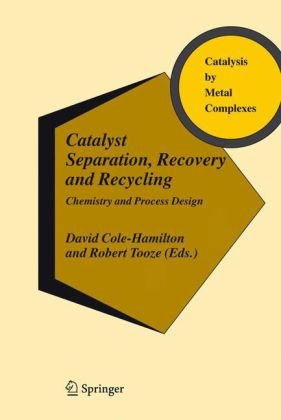

Most ebook files are in PDF format, so you can easily read them using various software such as Foxit Reader or directly on the Google Chrome browser.
Some ebook files are released by publishers in other formats such as .awz, .mobi, .epub, .fb2, etc. You may need to install specific software to read these formats on mobile/PC, such as Calibre.
Please read the tutorial at this link: https://ebookbell.com/faq
We offer FREE conversion to the popular formats you request; however, this may take some time. Therefore, right after payment, please email us, and we will try to provide the service as quickly as possible.
For some exceptional file formats or broken links (if any), please refrain from opening any disputes. Instead, email us first, and we will try to assist within a maximum of 6 hours.
EbookBell Team

4.3
58 reviewsThis book looks at new ways of tackling the problem of separating reaction products from homogeneous catalytic solutions. The new processes involve low leaching supported catalysts, soluble supports such as polymers and dendrimers and unusual solvents such as water, fluorinated organics, ionic liquids and supercritical fluids. The advantages of the different possibilities are discussed alongside suggestions for further research that will be required for commercialisation. Unlike other books, in addition to the chemistry involved, the book looks at the process design that would be required to bring the new approaches to fruition. Comparisons are given with existing processes that have already been successfully applied and examples are given where these approaches are not suitable. The book includes:
- New processes for the separation of products from solutions containing homogeneous catalysts
- Catalysts on insoluble or soluble supports – fixed bed catalysts - continuous flow or ultrafiltration
- Biphasic systems: water - organic, fluorous - organic, ionic liquid – organic, supercritical fluids (monophasic or biphasic with water, organic or ionic liquid)
- Comparisons with current processes involving atmospheric or low temperature distillation
- Consideration of Chemistry and Process Design
- Advantages and disadvantages of each process exposed
- Consideration of what else is need for commercialisation